Azure Data Factory Connector
Prerequisites
The Redwood Azure Data Factory is packaged as a separate car file.
- Version 9.2.6 or later
data-factory.carfile for import
Installation
The .car file can be installed using standard promotion. By default, the Data Factory car file requires the Partition DATAFACTORY to exist before it can be imported.
Please create this Partition before importing or select an existing Partition when importing.
Contents of the car file
The car file consists of the following objects:
| Object Type | Name |
|---|---|
| Application | DATAFACTORY.Redwood_DataFactory |
| Process | Definition DATAFACTORY.DataFactory_ImportJobTemplate |
| Process | Definition DATAFACTORY.DataFactory_ShowPipelines |
| Process | Definition DATAFACTORY.DataFactory_RunPipeline |
| Process | Definition DATAFACTORY.DataFactory_Template |
| Library | DATAFACTORY.Redwood_DataFactory |
Setup
Data Factory processes need their own Process Server and Queue. The Process Server and Queue must not be in Partition GLOBAL. By default, all the Data Factory objects live in the Partition DATAFACTORY in on-premises environments and your Partition in cloud environments.
In order to connect to your Data Factory instance, you need to create an app registration with a service principle in Azure Active Directory. (see https://docs.microsoft.com/en-gb/azure/active-directory/develop/howto-create-service-principal-portal#register-an-application-with-azure-ad-and-create-a-service-principal). This client application needs to be assigned the Data Factory Contributor permission.
From the app registration register the following settings:
- Tenant ID
- App/Client ID
- Client Secret
- Subscription ID
And from the Data Factory:
- Resource Group Name
- Factory Name
With this information we can setup a Credential to connect to Data Factory:
- Partition: Generally, Credentials need to be either in the Partition of your Process Server or in Partition GLOBAL; with this connector, the Process Server must reside in GLOBAL, so the credential must as well
- Protocol: soap
- Real User: App/Client ID
- Password: Client Secret
- Endpoint: Tenant ID
- Virtual User: the name of your Data Factory Process Server
Example of a credential:
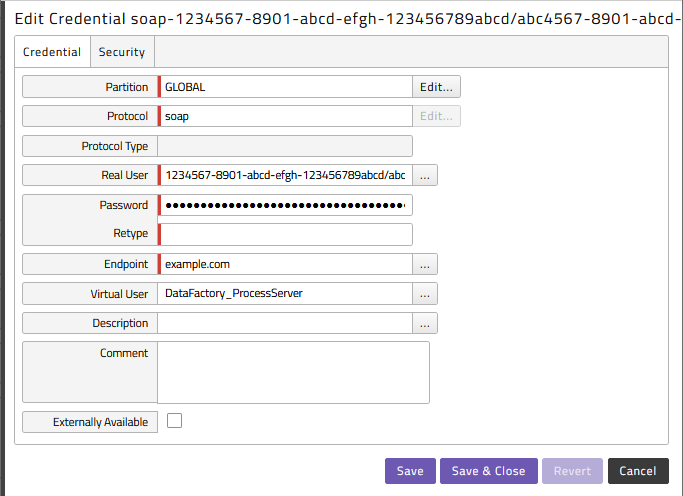
The Process Server DataFactory_ProcessServer is used as an example to set up the connection to a Data Factory instance system. In order to connect to more than one Data Factory system, duplicate the DataFactory_ProcessServer Process Server and create a new queue and a credential of type SOAP for that Data Factory system. Make sure that the ScriptService with the RedwoodScript definition type and the JobChainService with JobChain definition type are enabled on the Process Server.
Example of a process server:
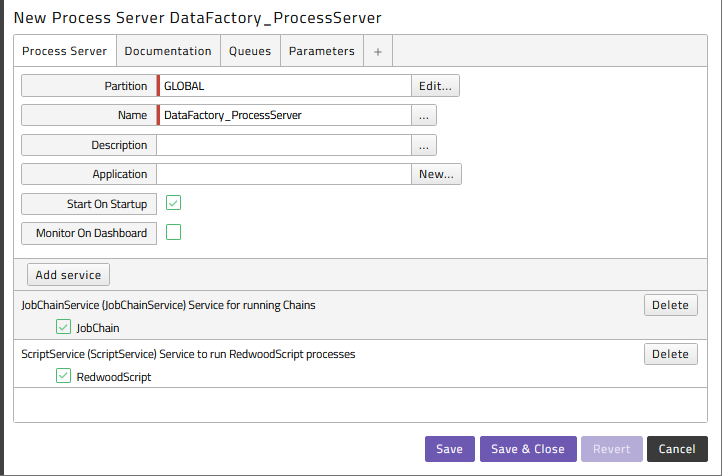
Running Data Factory processes
Finding Data Factory pipelines
To retrieve the list of pipelines available for scheduling got to the Redwood_DataFactory application, click on Applications > Redwood_DataFactory > DataFactory_ShowPipelines and submit it.

Specify the Subscription Id, the Resource Group Name and the Factory Name you want to list the pipelines from. You can filter the list by adding a Process Name filter.
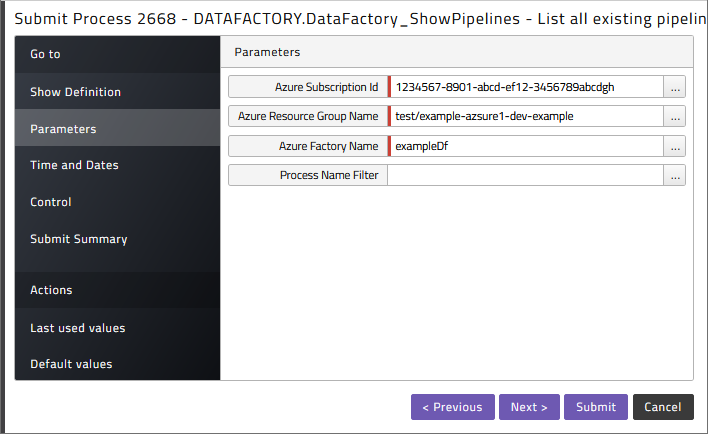
Select the correct Queue
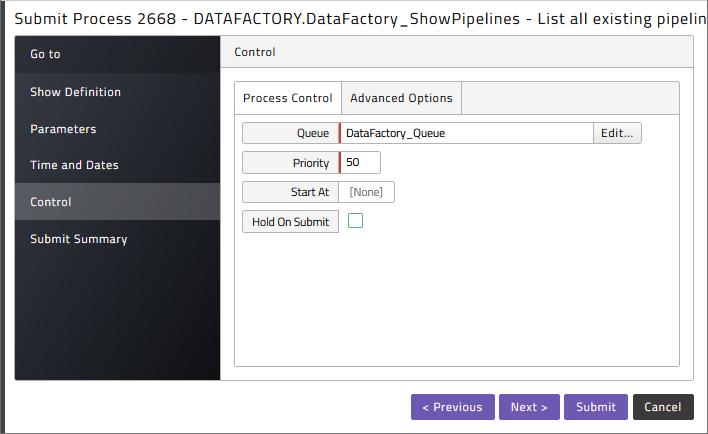
Once the process has finished, click on the stderr.log, and you will see the output as follows:

Here you can find the value later used as pipeline name, the first element straight after the index.
Schedule a Data Factory pipeline
In the Redwood_DataFactory application choose DataFactory_RunPipeline and submit it
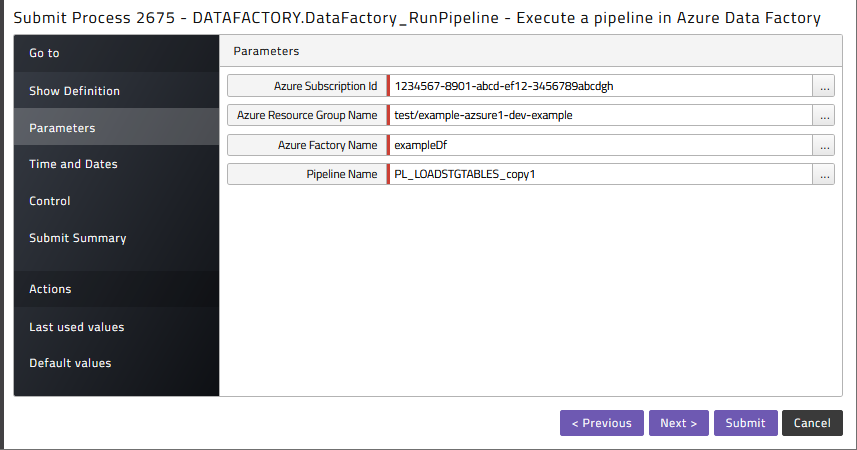
Again, specify the Subscription Id, the Resource Group Name and the Factory Name you want to run the pipelines from, as well as the name of the pipeline to execute.
Import Pipelines as Process Definitions
Submit DataFactory_ImportJobTemplate to import a pipeline as a process definition.
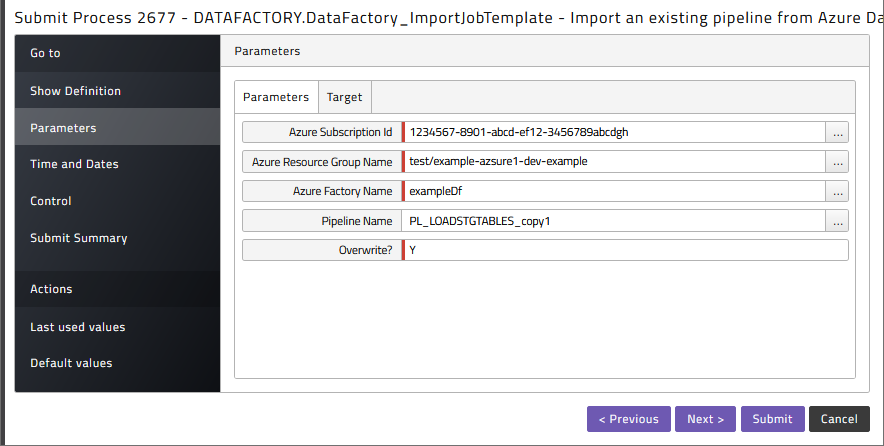
Here the pipeline name can be used to only import a selection of pipelines. Also, the Overwrite flag can be set to specify that existing definitions can be overwritten. On the Target tab it allows you to specify a target Partition, Application and prefix for the generated definition:
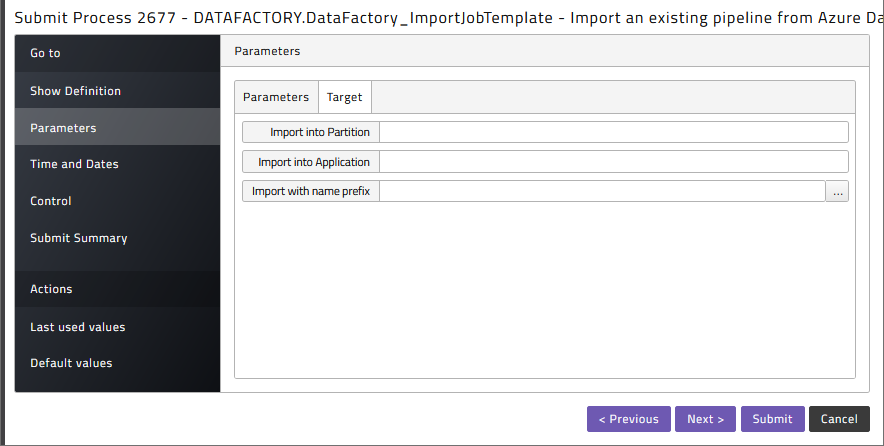
Troubleshooting
In the Control step of the submit wizard, where you select the queue, you can add additional logging to the output files by selecting debug in the Out Log and Error Log fields on the Advanced Options tab.

